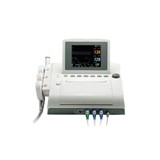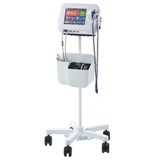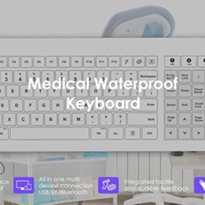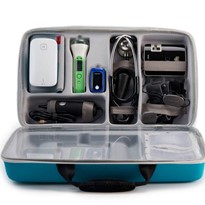As healthcare facilities continue to embrace digital transformation, telehealth solutions are becoming an integral part of modern medical practice. One of the key technologies making telehealth more effective, secure, and reliable is infrared (IR) technology in cameras. Infrared cameras are revolutionising virtual healthcare consultations by improving patient monitoring, ensuring clinician presence, and enhancing security in telehealth interactions.
What is Infrared Technology in Cameras?
Infrared technology allows cameras to detect heat signatures and operate in low-light or no-light conditions. Unlike standard cameras that rely on visible light, IR cameras use infrared radiation to capture images and video, making them effective for night vision, thermal imaging, and motion detection. These cameras can operate in two primary ways:
- Near-Infrared (NIR): Enhances images in low-light environments, often used for facial recognition and authentication
- Thermal Imaging (FIR): Captures temperature variations, useful for detecting health conditions such as fever or circulation issues
Benefits of Infrared Cameras in Telehealth
1. Enhancing Patient Monitoring and Diagnostics
Infrared cameras can detect body temperature variations, monitor breathing patterns, and track movement without requiring physical contact. This makes them ideal for:
- Remote patient monitoring, especially in ICU settings or aged care facilities
- Early detection of fevers, which is crucial in managing infectious diseases
- Sleep analysis and respiratory tracking in home telehealth solutions
2. Ensuring Telehealth Security and Identity Verification
With the rise of deepfake technology and identity fraud, ensuring that clinicians and patients are engaging with a real person is critical. Infrared cameras help verify human presence by detecting heat signatures that digital avatars or pre-recorded videos cannot replicate. This ensures:
- The person on the screen is a live human being, preventing fraud in teleconsultations
- Increased security in telemedicine prescriptions and patient data protection
3. Improving Accessibility in Low-Light Conditions
Many healthcare facilities operate 24/7, and telehealth services must be accessible at all times. IR cameras enable:
- Clear video communication in dimly lit hospital rooms, aged care settings, or patient homes
- Reliable facial recognition for secure logins and patient authentication, even in low-light environments
4. Supporting Hands-Free and Remote Consultations
Infrared technology allows clinicians to monitor patients remotely without requiring them to adjust lighting or camera angles. This enhances:
- The efficiency of virtual ward rounds and consultations
- The ability to conduct hands-free health assessments using thermal imaging
Conclusion: A Smarter Future for Telehealth
Infrared cameras are playing a crucial role in enhancing the quality, security, and accessibility of telehealth solutions in healthcare facilities. By enabling better patient monitoring, improving authentication, and ensuring clear communication in any environment, IR technology is a game-changer in the evolution of virtual healthcare.
As telehealth continues to grow, integrating advanced camera technology will be essential for ensuring safe, efficient, and effective remote healthcare services. The future of telehealth isn’t just about video calls—it’s about smart, secure, and intelligent interactions that deliver real value to both patients and clinicians.


.jpg)












-160x160-state_article-rel-cat.png)


















materials-205x205.jpg)


